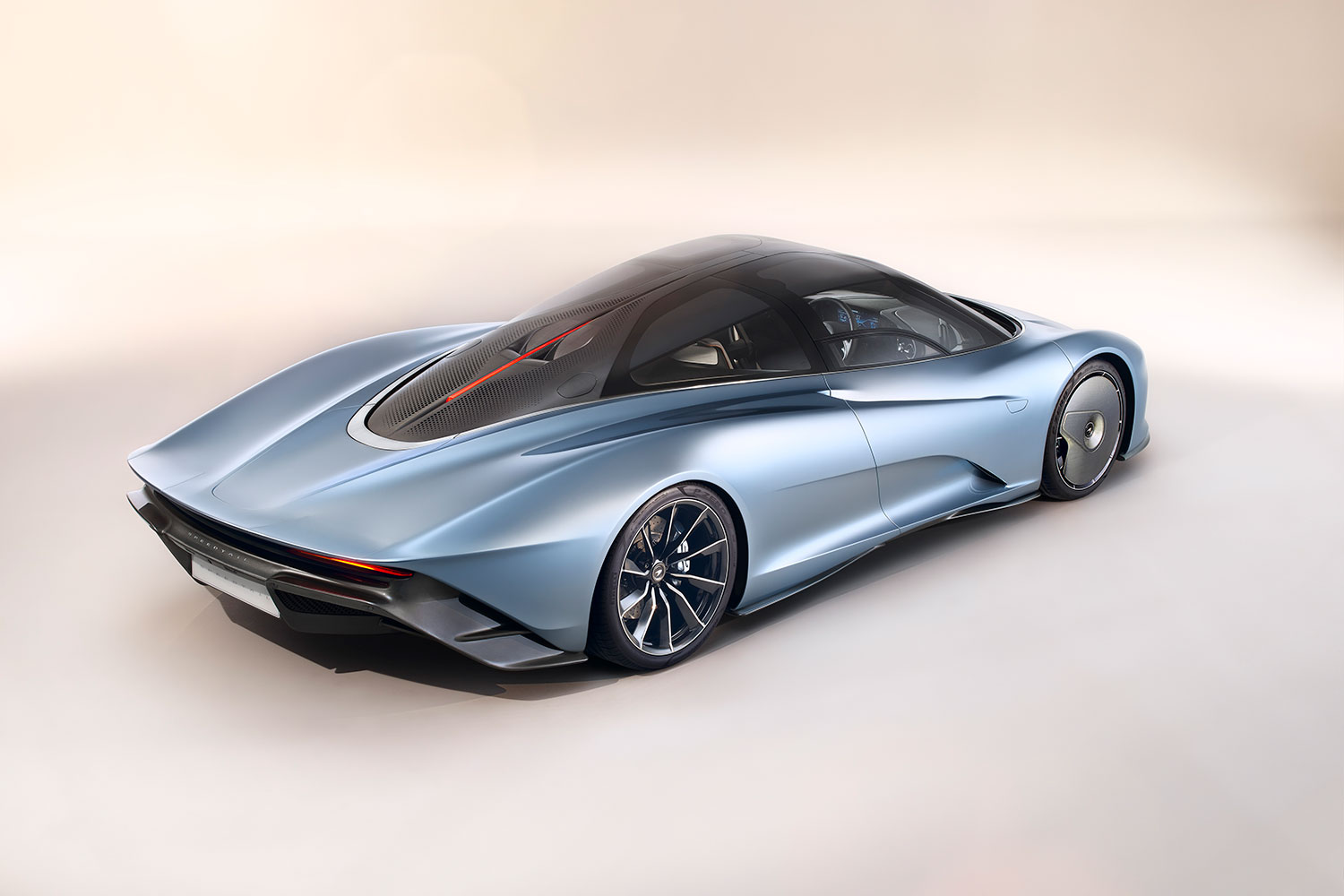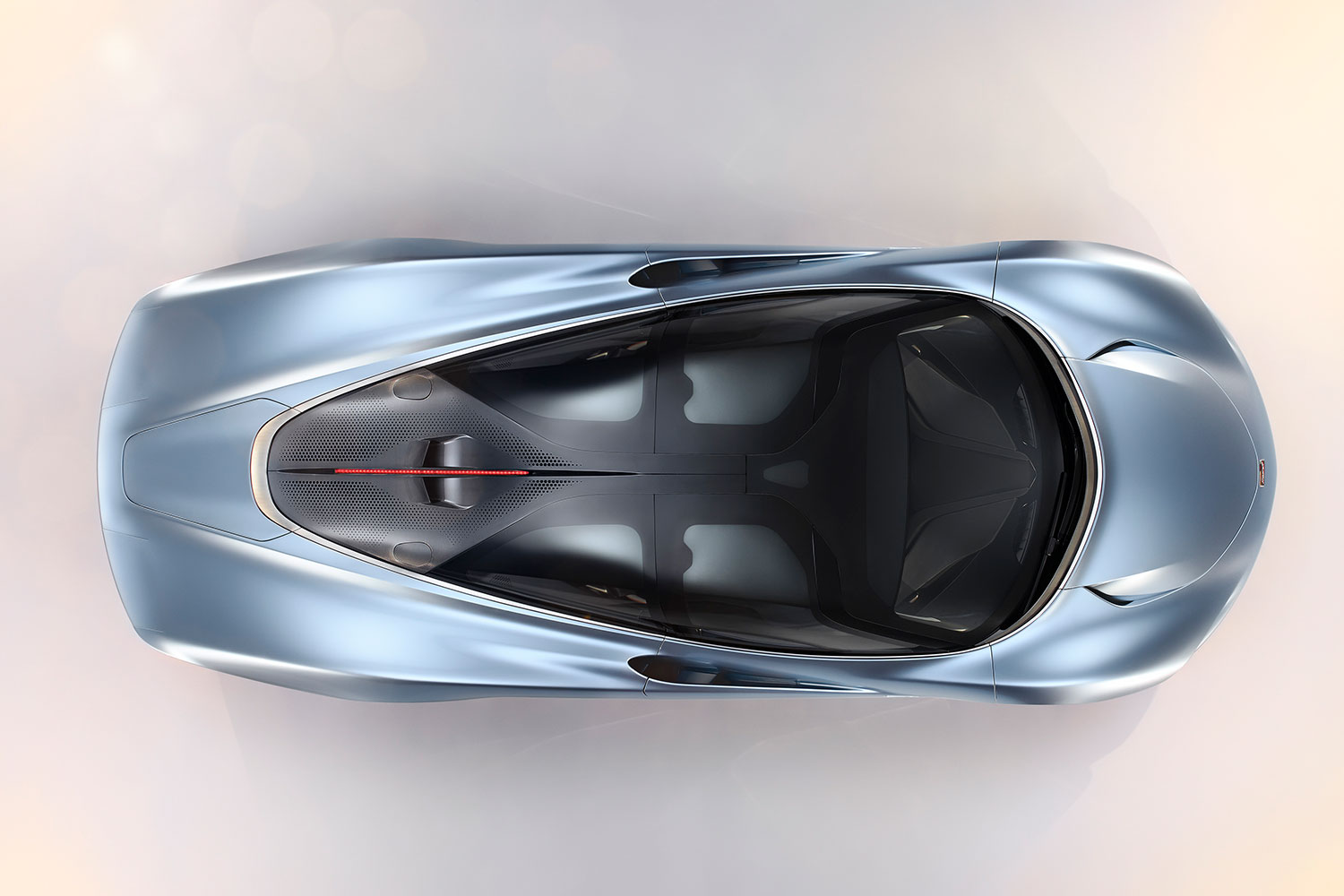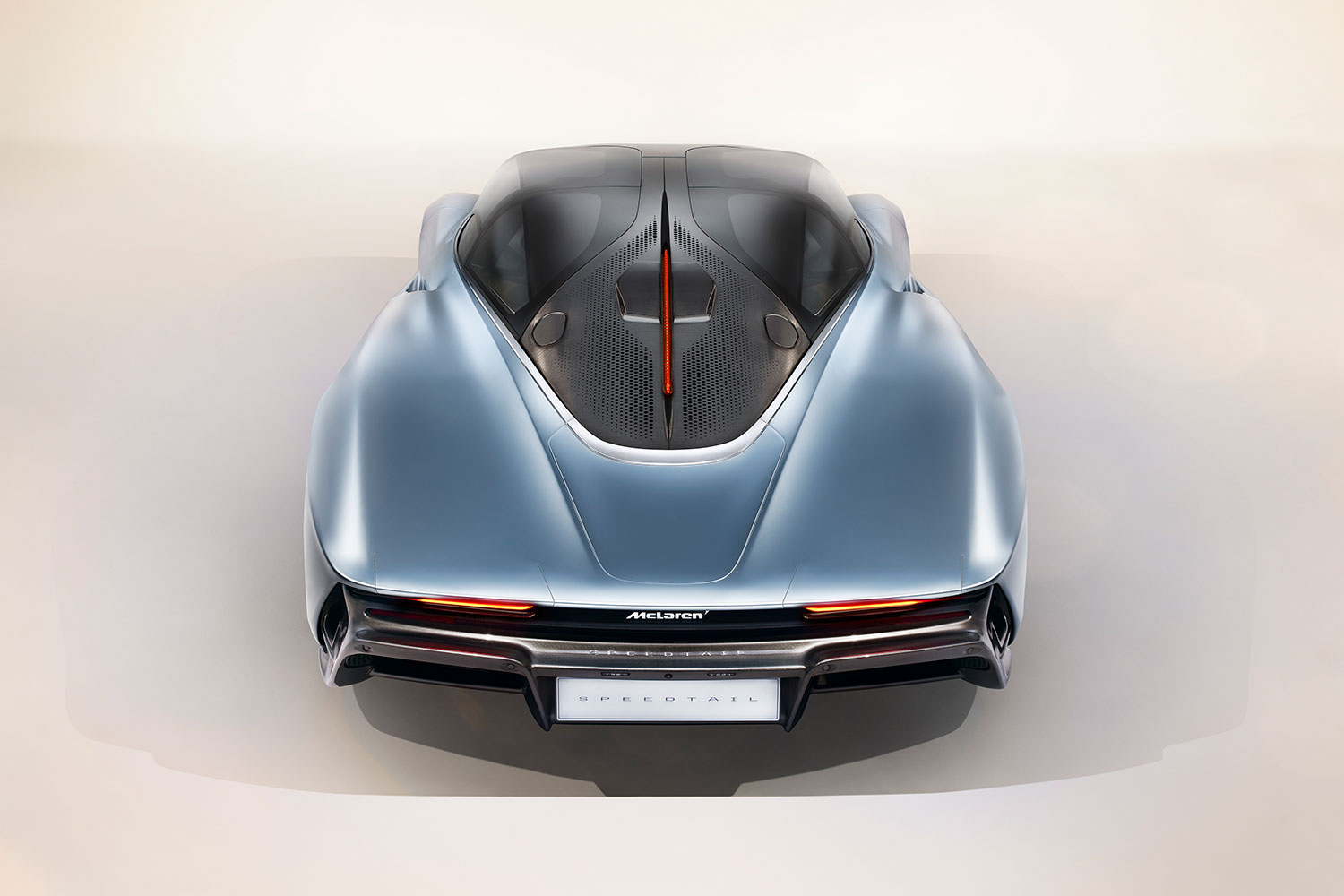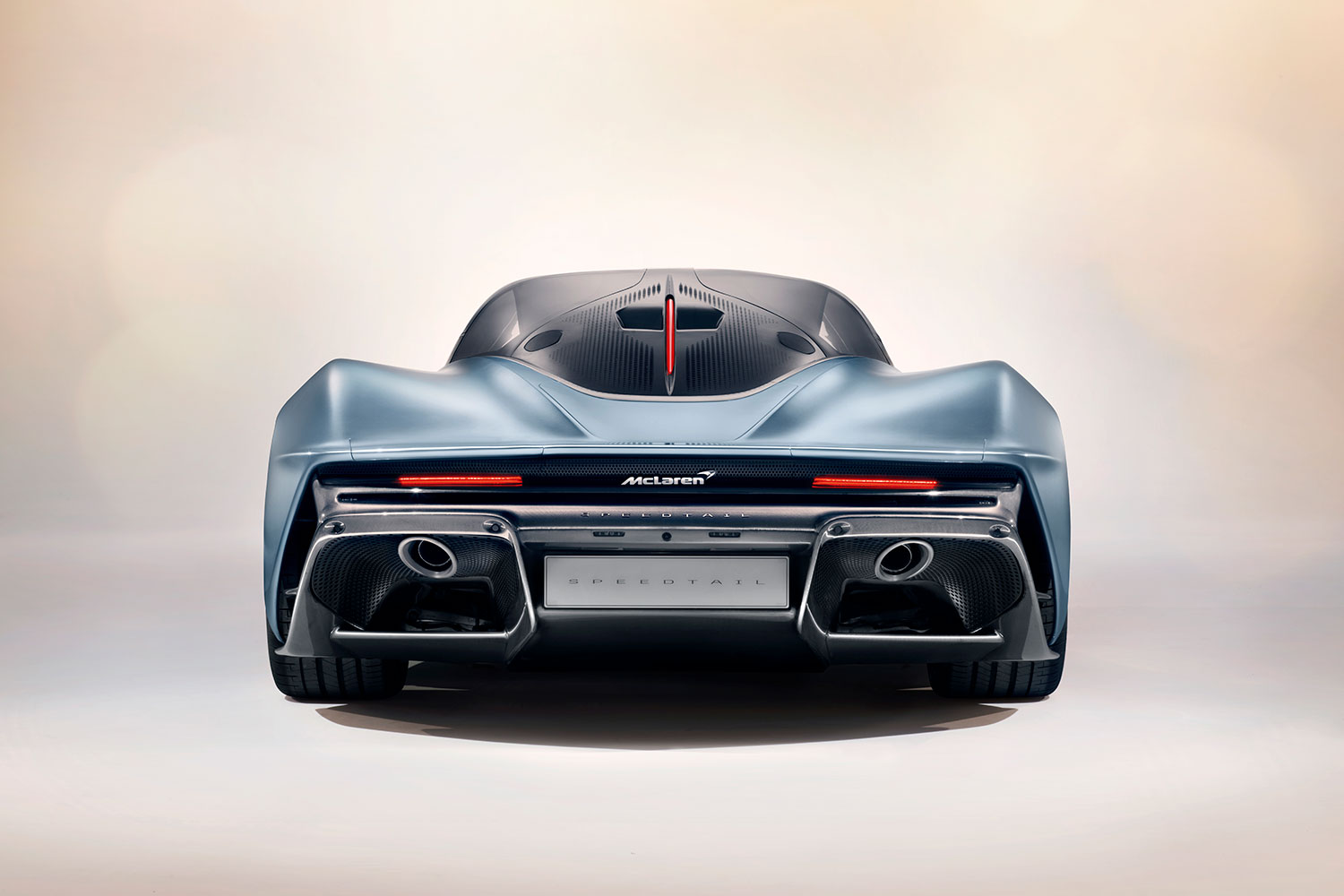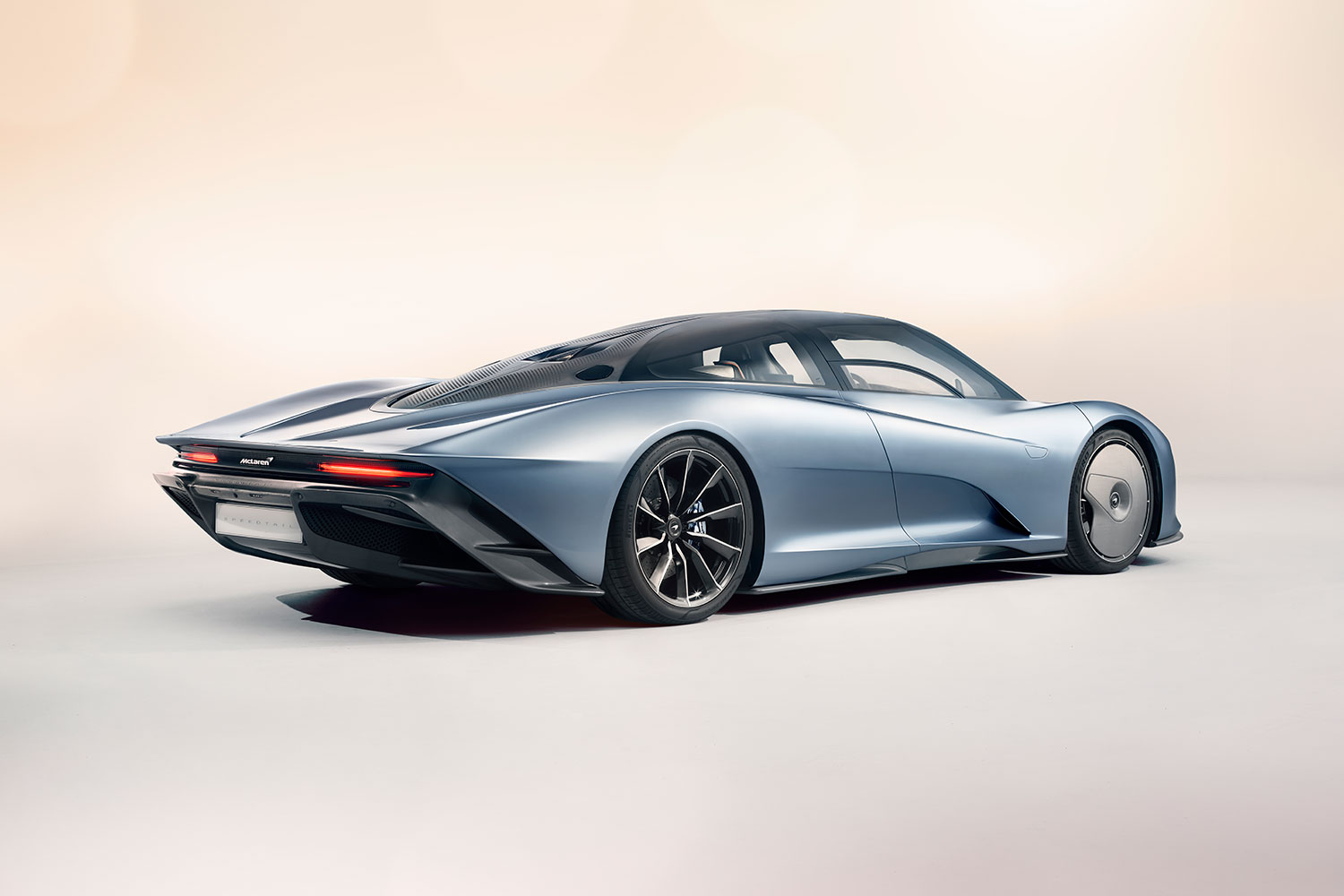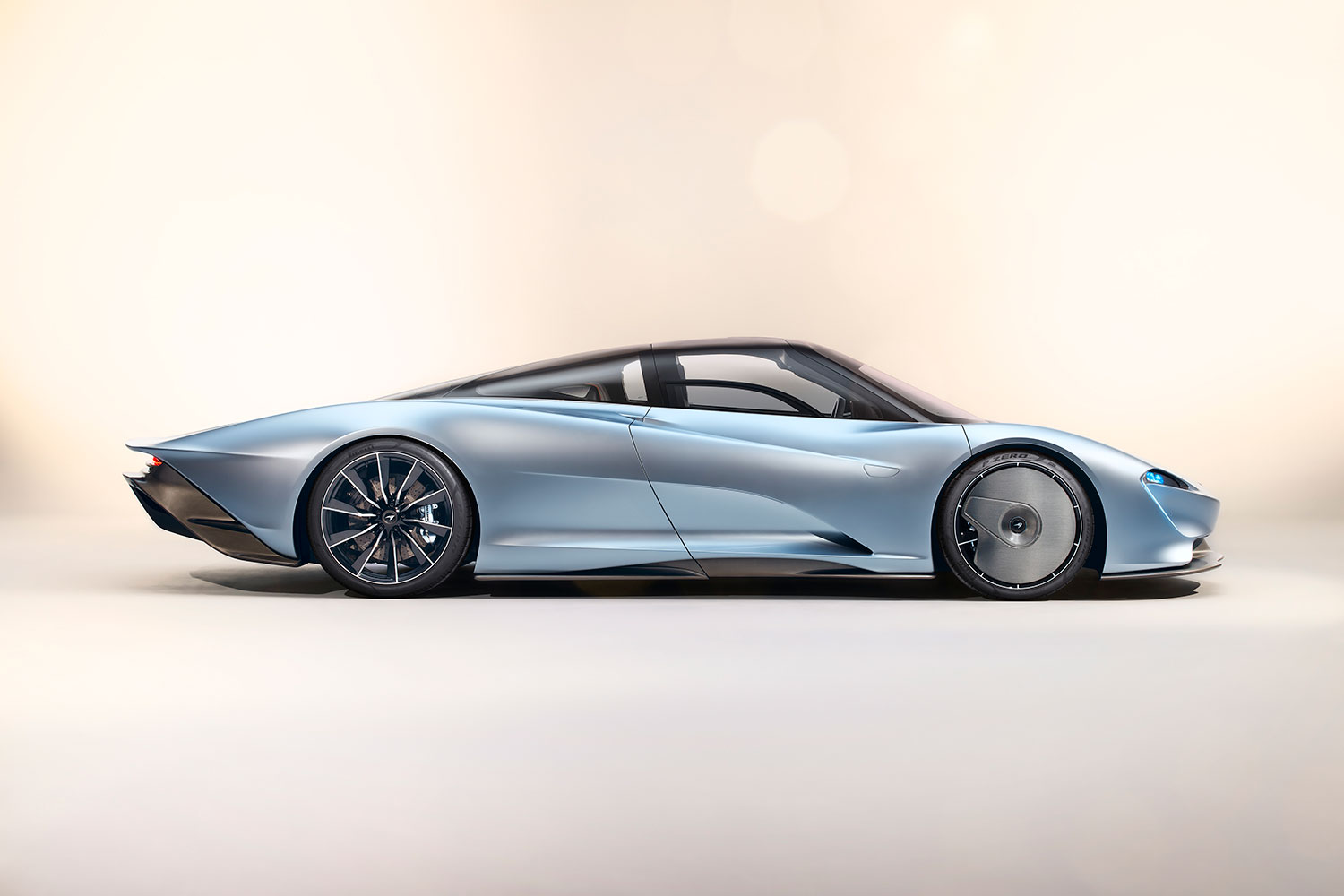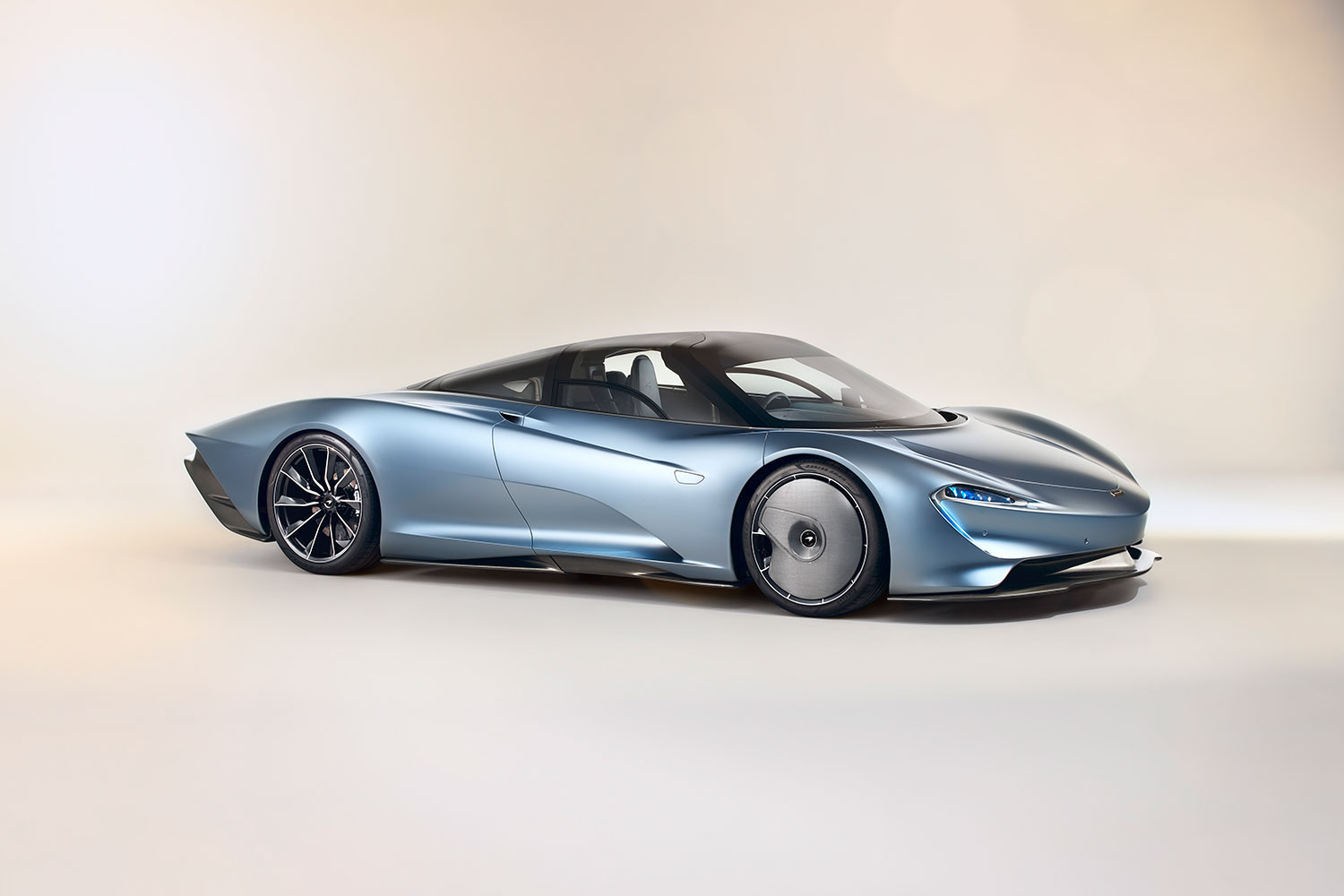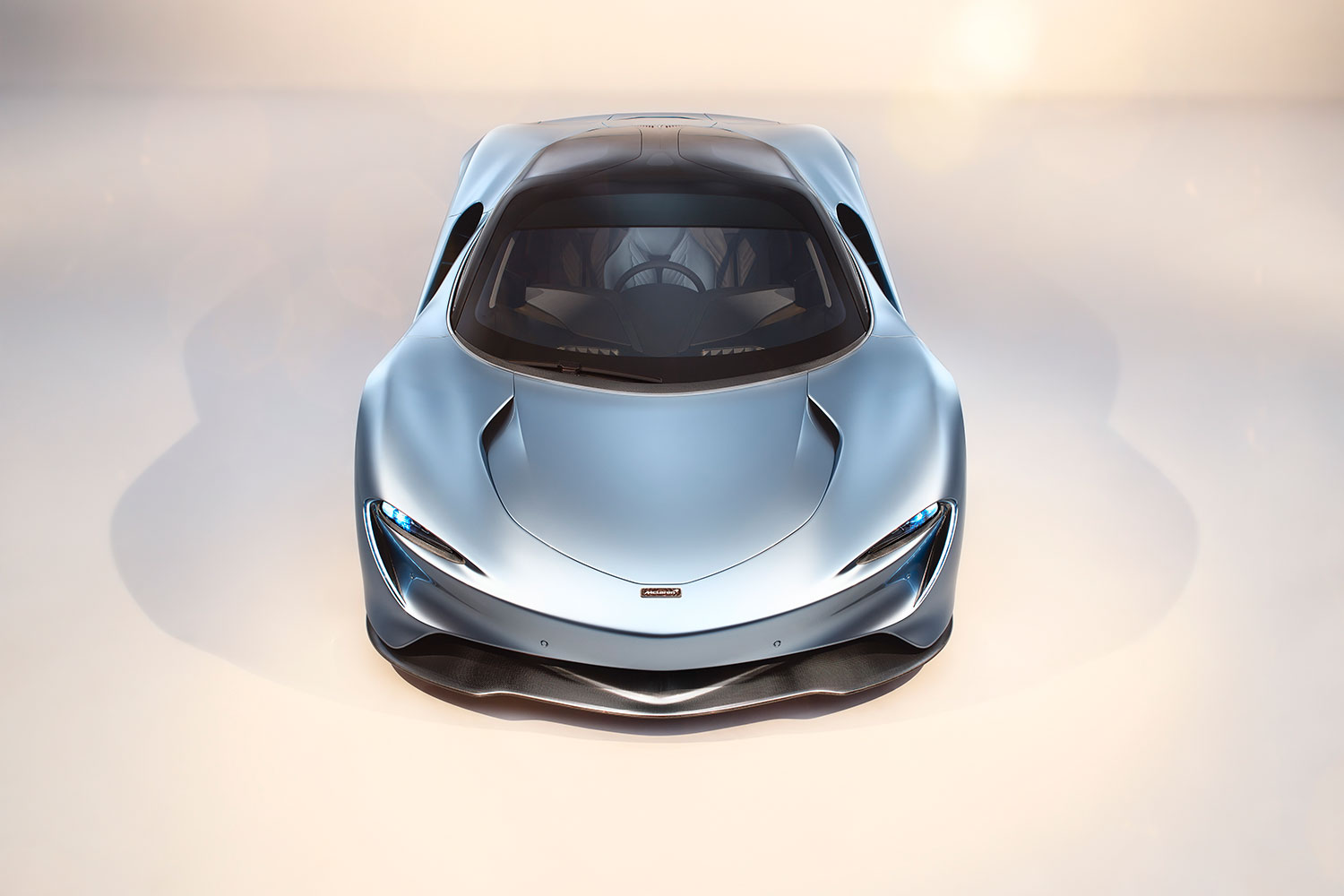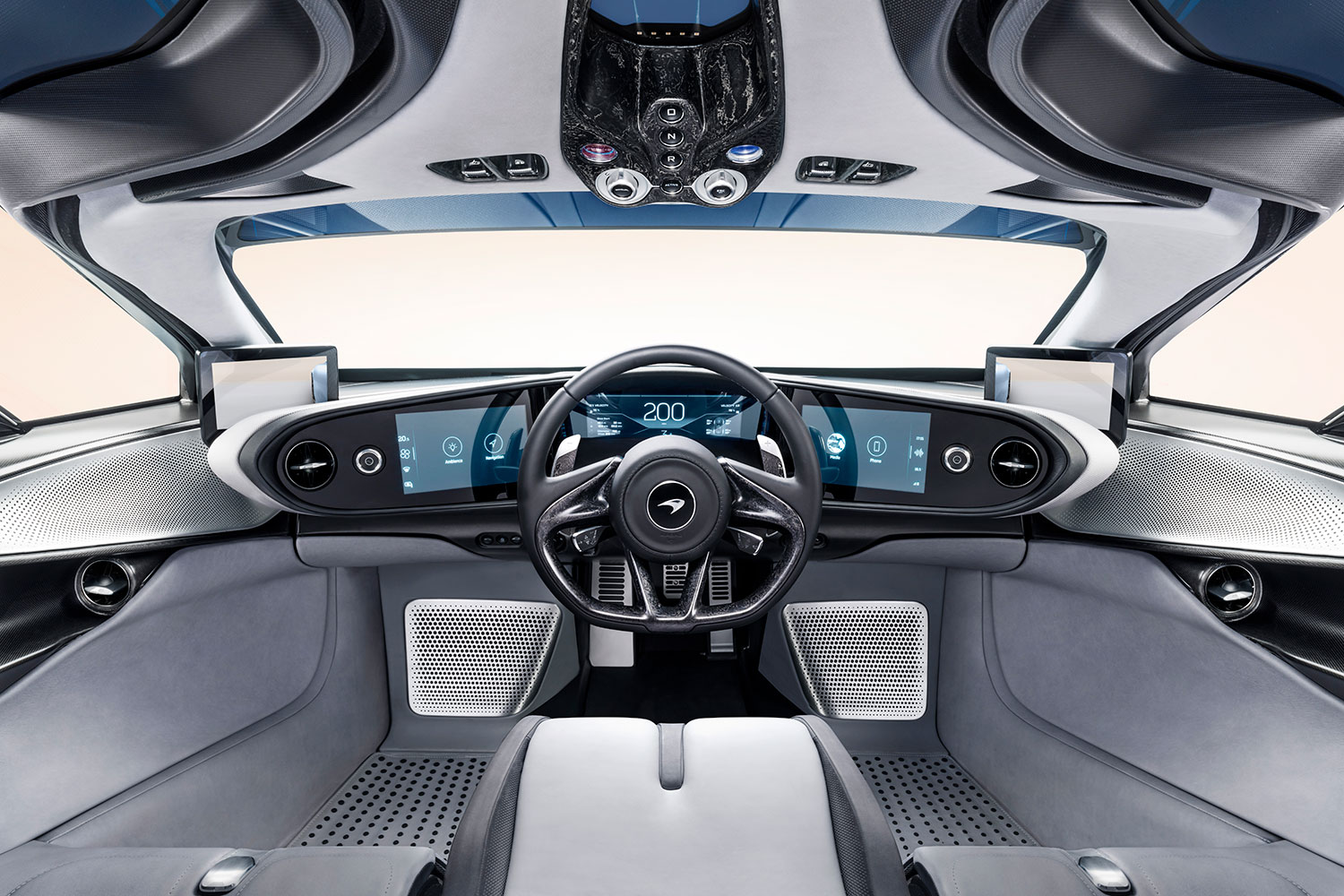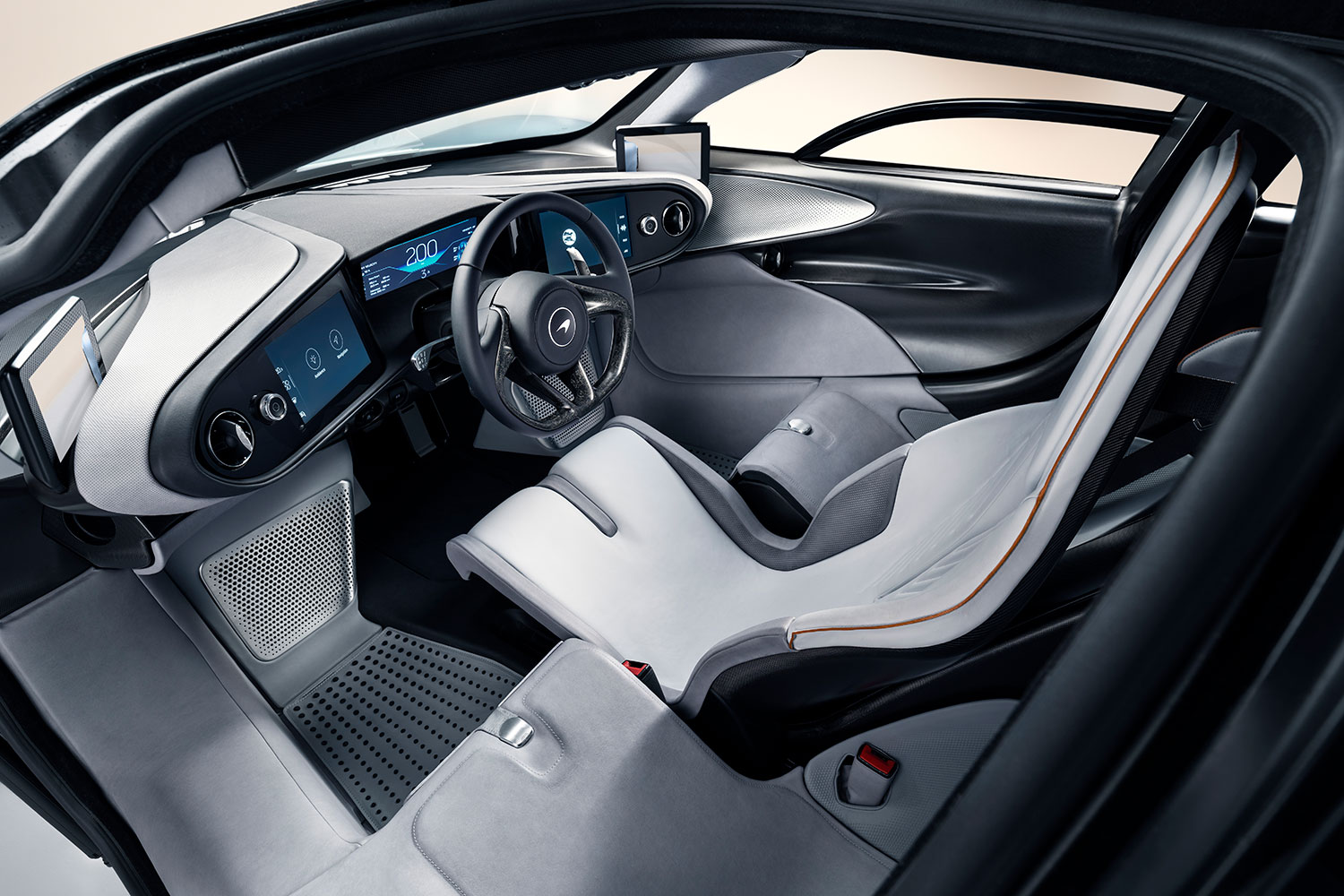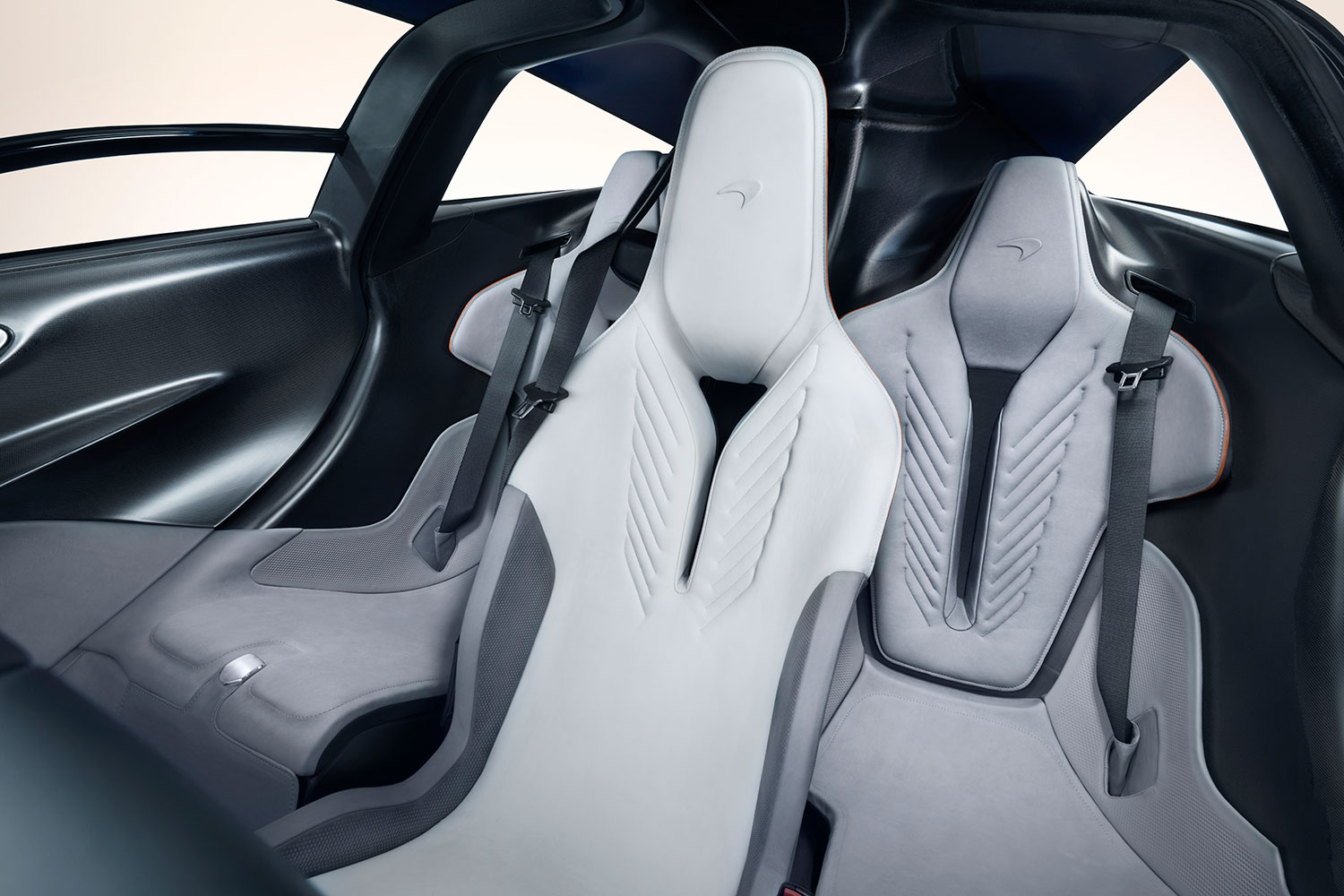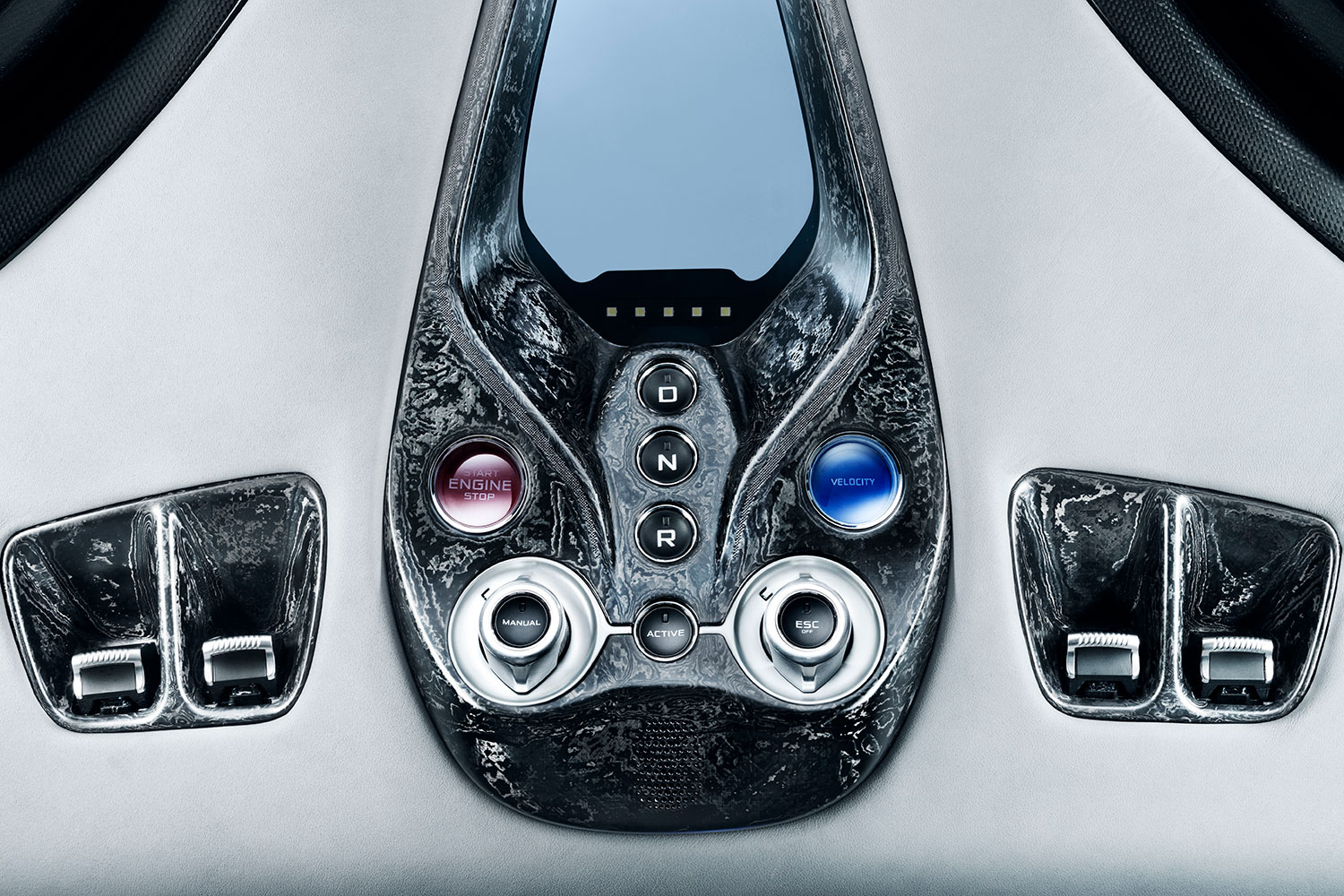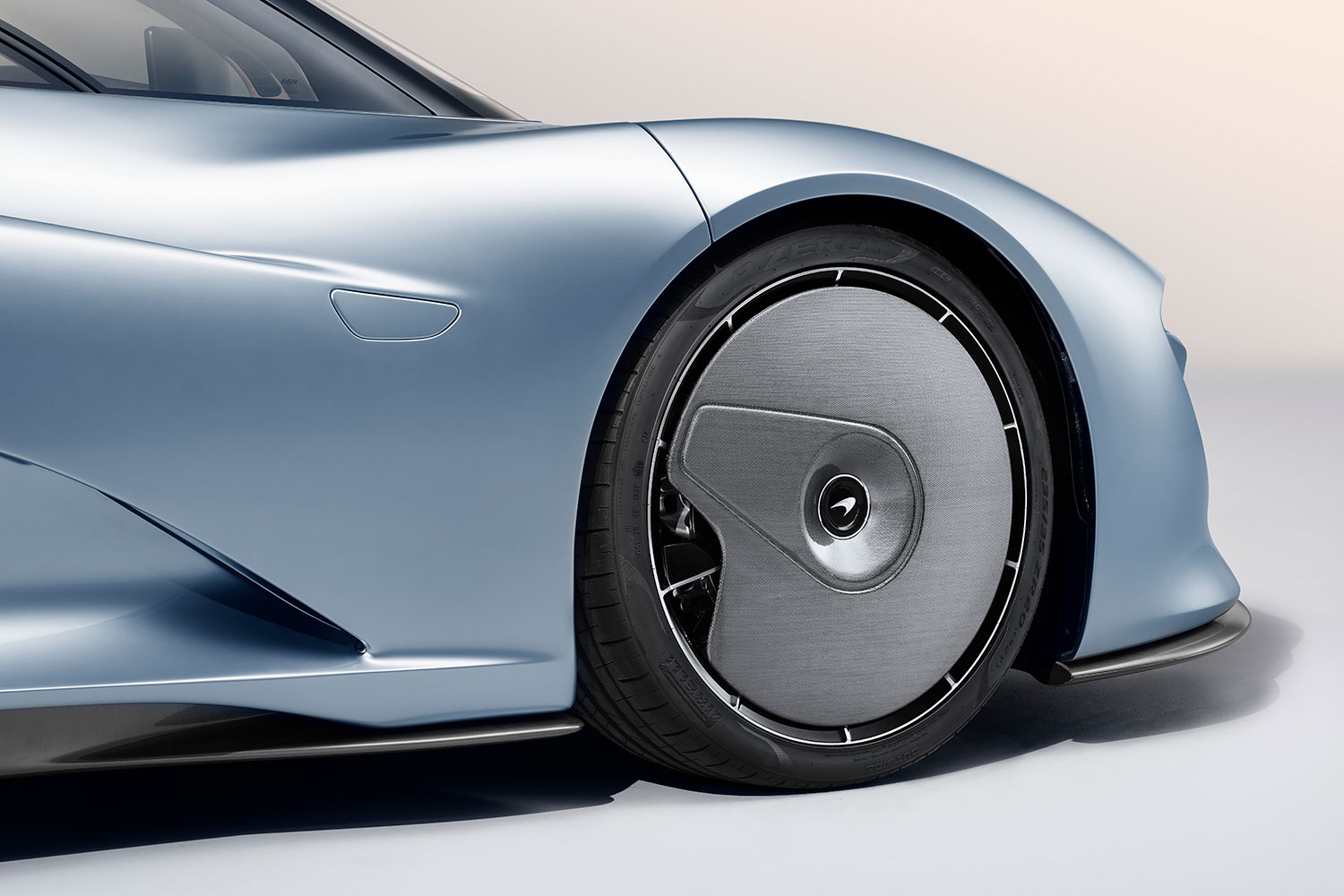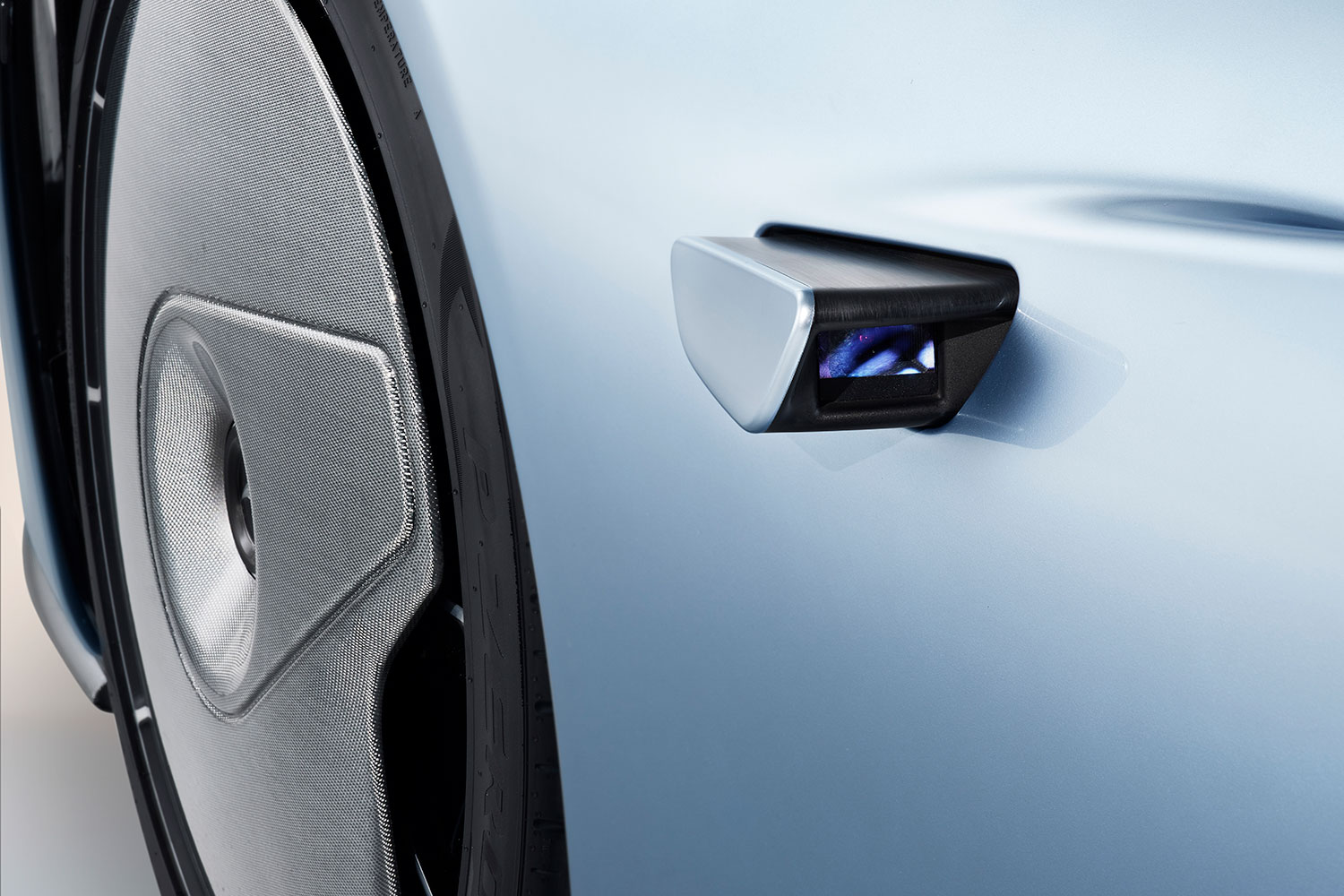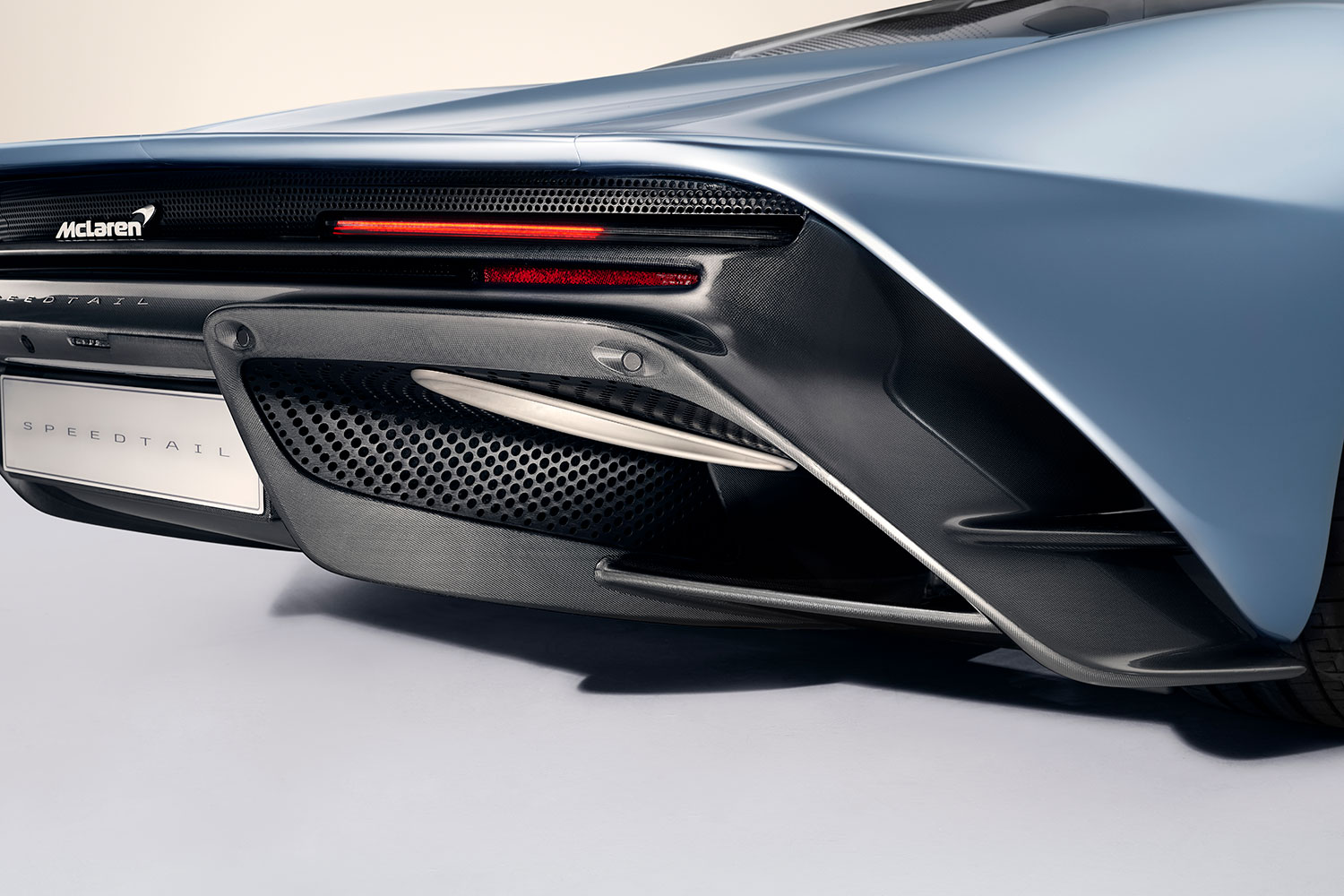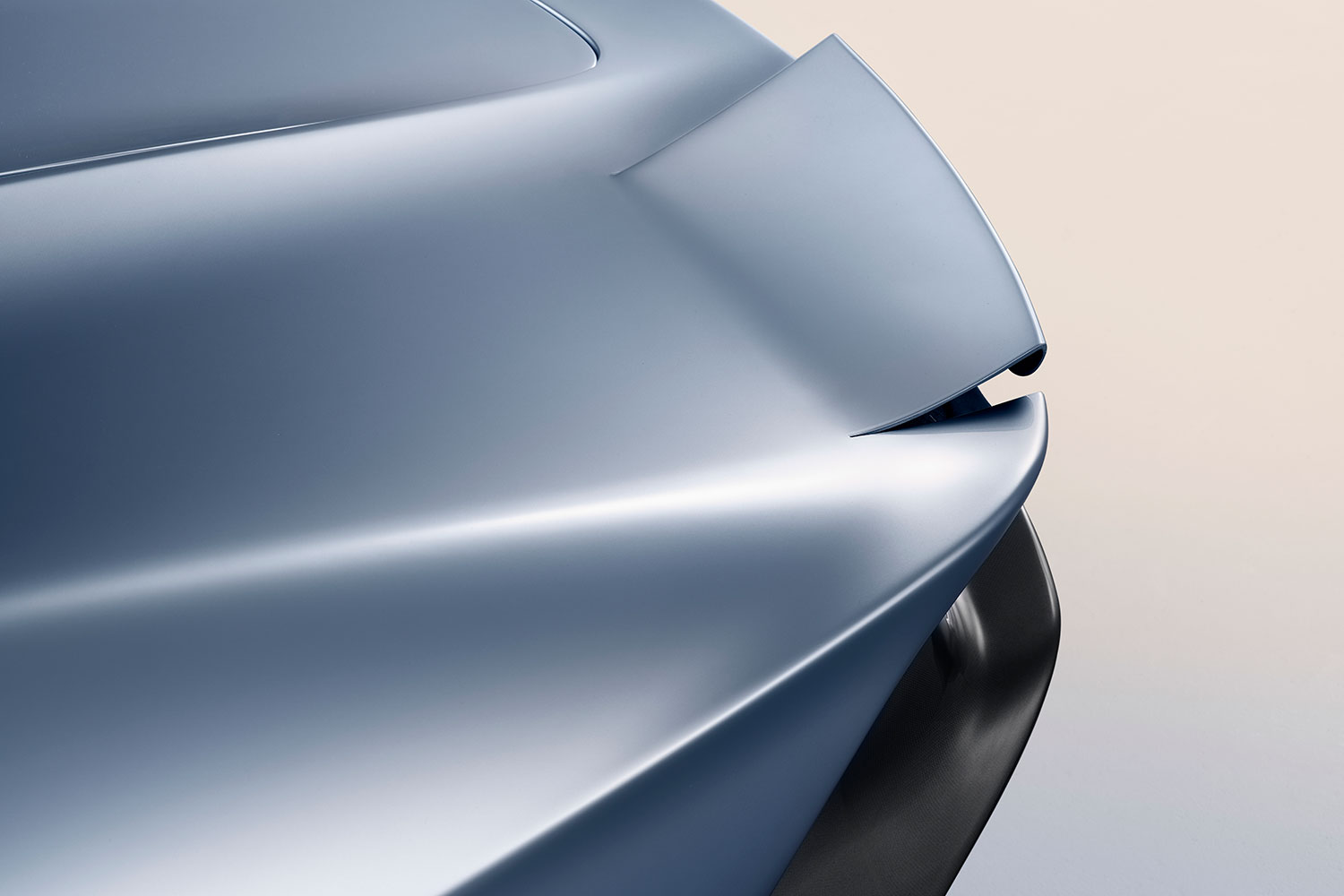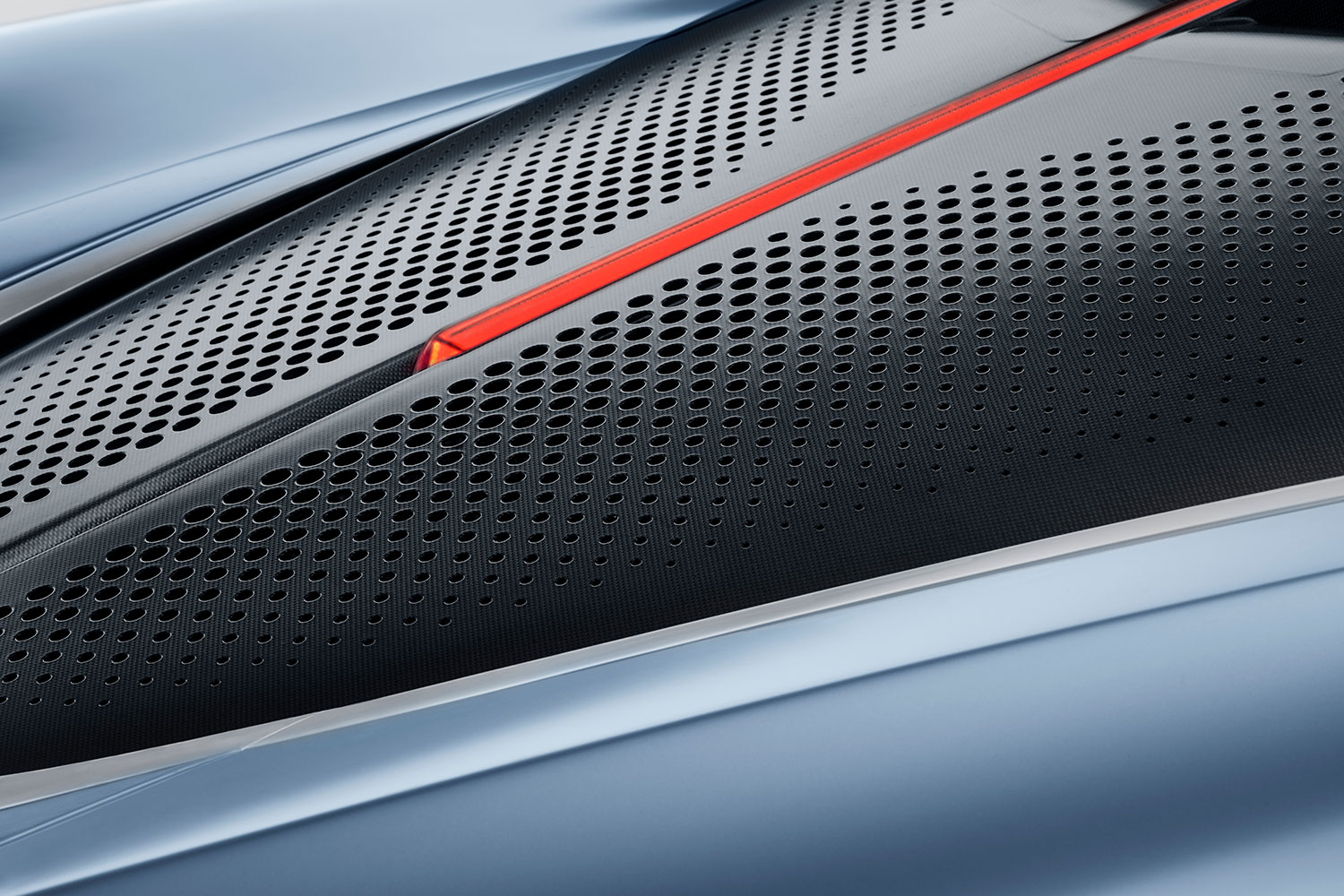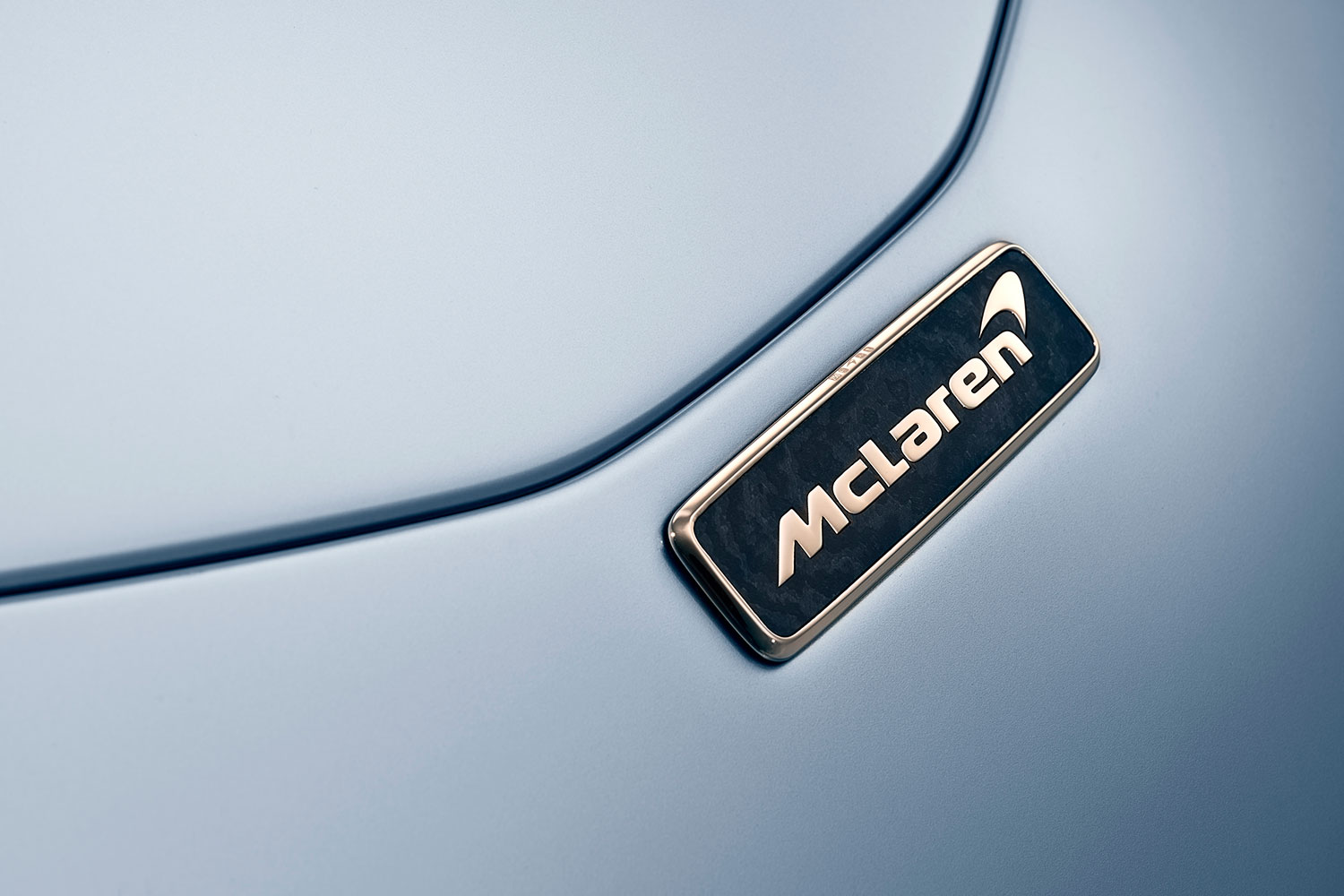Almost three decades ago, McLaren turned the supercar world on its head. Not only did the mighty McLaren F1 break what seemed like the laws of physics in terms of performance, but it gave owners the opportunity to bring along a second friend for triple-digit romps. Even though the F1’s three-abreast seating was hugely popular, the seating arrangement didn’t return when McLaren reinvented itself a decade ago. Until now. We give you the McLaren Speedtail.
The Speedtail is McLaren’s idea of a hyper grand tourer, a 1,035-horsepower, 250-mph hybrid hypercar that takes aim at the respective grand touring crowns worn by Bugatti’s Chiron and Koenigsegg’s Regera — A scalpel made of leather, carbon fiber, gasoline, and engineering. Whereas the McLaren Senna was designed to dominate every racetrack built, the Speedtail is a straight-line monster with the goal of taking the driver and their passengers from London to Lisbon in record-setting time.
The Speedtail is centered around the McLaren’s all-new Monocage carbon fiber monocoque chassis. A bespoke iteration of the brand’s safety cell, the new design allowed McLaren to center the driver, who is then flanked by each passenger — exactly the same method used in the original F1. Behind the cabin, McLaren hasn’t quite detailed what engine powers the Speedtail, but it’s more than likely it’s some form of the brand’s 4.0-liter twin-turbocharged V-8 found in the Senna and 720S, and a hybrid motor similar to the one found in McLaren’s P1. And, as mentioned, the Speedtail has 1,035 horsepower propelling you to truly ludicrous speeds. However, it’s most eye-watering metric is how quick the Speedtail hits 186 mph: 12.8 seconds. If proven true, and we have no reason to doubt McLaren, that would make the Speedtail literally the quickest accelerating car ever.
Now that power and acceleration are out of the way, the Speedtail is dripping with bleeding-edge tech and wild aerodynamics. First off, it has bendable carbon fiber. At the back of the Speedtail are two ailerons, the sort of kit you get with your plane. However, unlike a plane, where the ailerons have denoted shut lines and pivot points, the Speedtail’s don’t. They’re blended into the rear aerostructure and can bend thanks to a new form of pliable carbon fiber. The Speedtail also receives retractable door cameras that take the place of mirrors. As you go faster, the cameras retreat into the body structure and reduce the car’s overall drag.
Inside, that sort of 2158 A.D. tech continues with milled carbon fiber, electrochromic glass, directional leather to keep you better stabilized in the seats, and a roof-mounted starter to give you the full fighter pilot feel.
McLaren also worked with Pirelli to build a better tire, because, at 250 mph, you really want something connecting you to the road that’s not going to fail.
McLaren’s CEO Mike Flewitt stated, “McLaren has never built a vehicle like the Speedtail before. As our first ‘Hyper-GT’, the Speedtail is the ultimate McLaren road car; a fusion of art and science that combines an astonishing maximum speed with an iconic central-driving position and a truly pioneering approach to bespoke personalization. A ground-breaking hybrid powertrain sits within a lightweight carbon fiber body reminiscent of sleek ‘streamliners’ that once set world speed records, while the luxurious three-seat cockpit offers a sublime combination of an incredible driving experience, unmatched individualism and innovative materials never seen before in a road-going vehicle.”
McLaren will only build 106 Speedtails, the same number of cars the company built of the F1, and each will carry a starting price of $2.3 million. There are just a few problems though. They’ve all been spoken for and U.S. buyers will have to go through a handful of legal loopholes to get them licensed and insured as the Speedtail doesn’t quite meet U.S. regulations. That said, if you have $2.3 million to drop on one, you likely have the means to figure out how to drive it in the U.S. as well.
